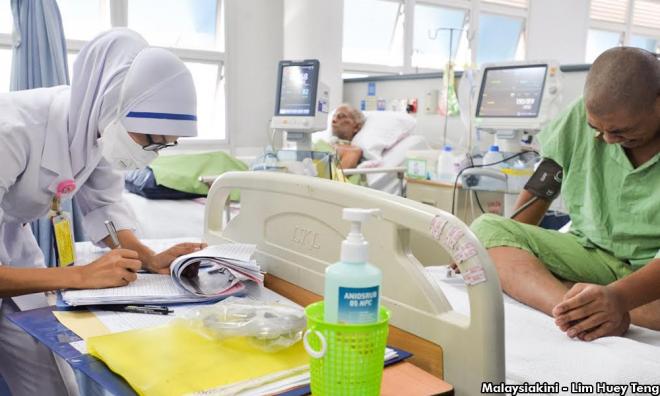
The responsibility for the lack of progress in restoring the ICU unit of the Sultanah Aminah Hospital in Johor Bahru falls onto Pakatan Harapan.
Despite the two visits and calls to action by the Regent of Johor since the 2016 ICU fire, there has been little visible progress in restoring hospital facilities to peak operating condition.
However, the sad truth of the matter is that the incident is one of many tragedies that is being faced by our public healthcare system.
Prior to Dr Mahathir Mohamad’s privatisation drive in the mid-1980s, our public healthcare system was among the best in the world where rich and poor received the same commitment and access to healthcare facilities.
Mahathir hailed privatisation as a victory in efficiency and cost reduction but, in reality, it only benefited government-linked political elites.
For example, his promotion of for-profit hospitals has created a brain drain that continues to erode the specialist core of our public healthcare system, the creation of conflicts of interest between the Finance Ministry and Health Ministry because of GLCs in private hospitals while the privatisation of five support services in 1997 created a new rent-seeker class and increased costs all around.
Despite these “improvements”, Malaysia’s public health expenditure in relation to the country’s GDP remains around two percent in 2018. This falls short of Harapan own promise of 4% in its manifesto.
In comparison, Singapore spends 4.9 percent of GDP on health, Australia 9.4 percent, Japan 10.2 percent and S Korea 7.2 percent.
According to Malaysia’s Health Ministry in 2017, Malaysia lacks doctors, as our ratio is only at 1.6:1,000.
In Johor itself, the doctor to population ratio is 1:1,199 while the hospital bed to population ratio stands at 1.44:1,000 – a far cry from the Eleventh Malaysia Plan target of a doctor to population ratio of 1:400 and a hospital bed to population ratio of 2.3: 1000
Although the World Health Organisation prescribes a doctor-population ratio of 1:1,000, many developed countries maintain higher ratio. France has a ratio of 3.227:1,000, Germany 4.125:1,000, United States 2.554:1,000 and Singapore 2.2:1,000.
Earlier this year, an audit report by the National Audit Department revealed that our hospitals, especially the emergency and trauma departments (ETD) at Malaysian hospitals are understaffed, overcrowded, under-funded and do not have enough equipment to provide proper levels of care.
Health Ministry director-general Noor Hisham Abdullah echoed this statement on his Facebook page:
“We are currently under-funded, understaffed, underpaid, overworked, overstretched and with facilities overcrowded with patients. We all need […] to improve the public healthcare system [...] all of which are beyond the control of MOH.”
Budget 2020 offered some hope that we would see some change – there was RM1.6 billion allocated to improving public infrastructure. However, recent headlines remain worrying.
On Nov 18, the Malaysian Medical Association (MMA) warned the government that our public healthcare system may face a burnout.
The reason? Increasing patient load and more disappointingly, a government-mandated hiring freeze where the federal government rejected over 21,741 job positions for our public healthcare system.
Why does the government continue to "play doctor” with our public healthcare system even under the “reform” government of Harapan? Is this part of Mahathir’s efforts to “save” our country from the excesses of the Harapan government?
We need to break from the old status quo - we need to expand our public facilities and we need to do it fast.
Unfortunately, our new government seems insistent on keeping to past practices. After all, if two national cars didn’t work, time to try a flying car, eh?
All the while, our public healthcare system continues to suffer while certain private providers continue to walk away with another year of “supernormal” profits.
One day, we may all face a kind of national economic bankruptcy. However, moral bankruptcy is already here and visible for those who care to take a good look. - Mkini



No comments:
Post a Comment
Note: Only a member of this blog may post a comment.